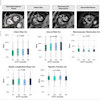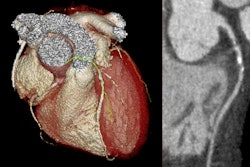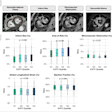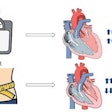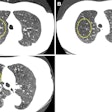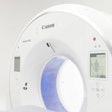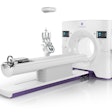Optical coherence tomography (OCT)-guided stent implantation in percutaneous coronary intervention (PCI) achieves better outcomes than angiography for patients with complex coronary lesions, researchers have reported.
Study results highlighted at the annual congress of the European Society of Cardiology (ESC) in London found that OCT improves survival and reduces adverse cardiovascular events. OCT uses light (instead of contrast dye and x-ray) to create cross-sectional and longitudinal images, and the findings are based on the randomized trial, OCCUPI.
"Our results show that the use of OCT guidance improves clinical outcomes and enhances safety and effectiveness of coronary stenting, reducing cardiac death, myocardial infarction, stent thrombosis, and the need for revascularization by 38% in a group of very complex patients, which more reflects contemporary interventional cardiology practice," said presenter Prof. Byeong-Keuk Kim, MD, from Yonsei University Severance Hospital in Seoul, Korea, during an ESC 2024 Congress Hot Line Session.
The OCCUPI trial enrolled 1,604 patients (ages 19-85; median age, 64) from 20 centers in The Republic of Korea. Study participants had anatomically complex lesions that required PCI using drug-eluting stents.
Patients were randomized in a 1:1 ratio to undergo either OCT guidance (803 patients) or angiography guidance (801 patients). The main measure of interest was a composite of cardiac death, myocardial infarction, stent thrombosis, and target-vessel revascularization at one year. A total of 1,588 (99%) patients completed the one-year follow-up, Kim and colleagues noted.
“We now need to establish detailed standards for optimal use of OCT for the improvement of clinical outcomes of PCI for complex cases based on the OCCUPI trial," Kim said.
In patients where OCT was used to guide PCI, patients were also 64% less likely to develop spontaneous myocardial infarction (excluding periprocedural myocardial infarction) or require target-vessel revascularisation than those in the angiography-guided group (0.9% vs 2.4% and 1.5% vs 4.1%, respectively), according to the findings. The study also noted that the incidence of contrast-induced nephropathy after PCI was not significantly different between the two groups (1.3% vs 0.9%).
"Previous studies have suggested practical benefits of OCT-guided PCI by providing comprehensive information on coronary vessels, plaques, and implanted stents," the researchers noted. This latest study follows up on the findings of the October trial published in 2023.
The full title of the presentation was: OCCUPI - Optical coherence tomography-guided coronary intervention in patients with complex lesions. Additional details were published on 2 September in The Lancet.

